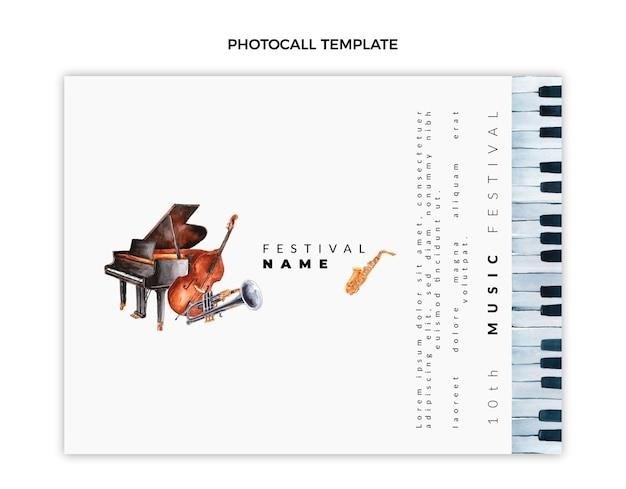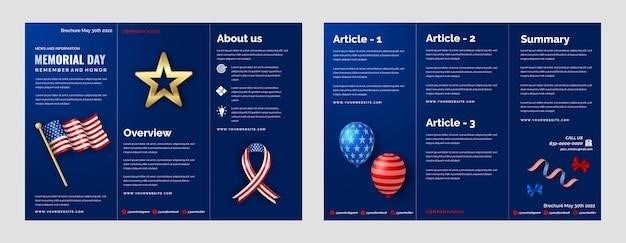Minor Scales for Piano⁚ A Comprehensive Guide
This guide provides a comprehensive overview of minor scales on the piano‚ exploring their different types‚ construction‚ and applications in music theory and composition. You will learn the formulas‚ fingerings‚ and techniques for playing these scales‚ as well as discover valuable resources for further exploration. Whether you’re a beginner or an experienced pianist‚ this guide will equip you with the knowledge and skills to master minor scales and enhance your musical understanding.
Introduction
Minor scales‚ the musical counterparts to major scales‚ are fundamental building blocks in music theory and composition. They evoke a sense of melancholy‚ introspection‚ and emotional depth‚ adding a rich layer of expressiveness to melodies and harmonies. Understanding minor scales is essential for any pianist who wishes to expand their musical vocabulary and explore the full range of emotional expression within music. This guide delves into the world of minor scales for the piano‚ providing a comprehensive understanding of their structure‚ types‚ and applications.
From the haunting beauty of the natural minor to the dramatic twists of the harmonic and melodic minor‚ we will explore the unique characteristics of each scale type. We will examine the formulas for constructing these scales‚ providing a clear and concise framework for understanding their intervals and note relationships. Additionally‚ we will discuss the practical application of minor scales in playing‚ improvising‚ and composing music.
Whether you are a beginner seeking to enhance your piano skills or an experienced musician looking to deepen your understanding of music theory‚ this guide will provide you with the necessary knowledge and tools to master minor scales and unlock their expressive potential.
Types of Minor Scales
While the term “minor scale” is often used generically‚ there are actually three distinct types of minor scales‚ each with its own unique characteristics and applications⁚ the natural minor‚ the harmonic minor‚ and the melodic minor.
The natural minor scale is the most basic form‚ often referred to simply as the minor scale. It is characterized by a specific interval pattern that creates a melancholic or wistful sound. The harmonic minor scale‚ in contrast‚ features a distinctive raised seventh degree‚ which introduces a leading tone that pulls towards the tonic‚ adding a sense of tension and resolution. The melodic minor scale‚ designed for melodic purposes‚ uses a raised sixth and seventh degree when ascending‚ creating a smoother‚ more lyrical sound‚ but reverts to the natural minor pattern when descending.
Understanding the differences between these three minor scales is crucial for a pianist’s musical development. Each type possesses its own unique flavor and lends itself to different musical styles and contexts. This guide will delve into the specifics of each type‚ providing a clear explanation of their construction and applications.
Natural Minor Scale
The natural minor scale‚ often referred to simply as the minor scale‚ is the most basic and fundamental form of the minor scales. It is characterized by its specific interval pattern‚ which gives it a melancholic or wistful sound that is distinct from the bright and cheerful quality of the major scale. The natural minor scale is a diatonic scale‚ meaning it contains seven notes and follows a specific formula for constructing its intervals.
The formula for constructing the natural minor scale is as follows⁚ root‚ 2nd‚ b3rd‚ 4th‚ 5th‚ b6th‚ b7th. This means that the scale contains the following intervals⁚ root‚ major second‚ minor third‚ perfect fourth‚ perfect fifth‚ minor sixth‚ and minor seventh. For example‚ the A natural minor scale consists of the notes A‚ B‚ C‚ D‚ E‚ F‚ and G.
The natural minor scale is the basis for many musical melodies and harmonies. It is often used in classical music‚ folk music‚ and jazz. It is also the basis for the other two types of minor scales‚ the harmonic minor and the melodic minor‚ which are derived from the natural minor scale by altering specific intervals.
Harmonic Minor Scale
The harmonic minor scale is a variation of the natural minor scale that introduces a unique characteristic⁚ a raised seventh degree. This alteration results in a distinct sound that is both dramatic and evocative‚ often adding a sense of tension and resolution to melodies and harmonies. The harmonic minor scale retains the same intervals as the natural minor scale from the root to the sixth degree but raises the seventh degree by a half step.
The formula for constructing the harmonic minor scale is⁚ root‚ 2nd‚ b3rd‚ 4th‚ 5th‚ b6th‚ 7th. This means that the scale contains the following intervals⁚ root‚ major second‚ minor third‚ perfect fourth‚ perfect fifth‚ minor sixth‚ and major seventh. For example‚ the A harmonic minor scale consists of the notes A‚ B‚ C‚ D‚ E‚ F‚ and G#.
The raised seventh degree in the harmonic minor scale creates a characteristic interval called the “tritone‚” which is a half step away from the fourth degree. This tritone interval adds a distinctive flavor and a sense of urgency to the scale‚ making it a popular choice for creating dramatic melodies and progressions. The harmonic minor scale is commonly used in classical music‚ jazz‚ and other genres‚ adding a unique and often unexpected twist to the standard minor scale.
Melodic Minor Scale
The melodic minor scale is a variation of the natural minor scale that aims to create a smoother‚ more melodic sound‚ particularly when ascending. It achieves this by raising both the sixth and seventh degrees by a half step compared to the natural minor scale. This alteration results in a more major-like sound‚ especially when moving upwards.
The formula for constructing the melodic minor scale is⁚ root‚ 2nd‚ b3rd‚ 4th‚ 5th‚ 6th‚ 7th. However‚ when descending‚ the scale reverts back to the natural minor scale‚ using the original formula⁚ root‚ 2nd‚ b3rd‚ 4th‚ 5th‚ b6th‚ b7th. This creates a distinct difference between the ascending and descending forms of the melodic minor scale‚ making it a unique and versatile tool for melodic construction.
For example‚ the A melodic minor scale consists of the notes A‚ B‚ C‚ D‚ E‚ F#‚ and G# when ascending. However‚ when descending‚ it reverts back to A‚ B‚ C‚ D‚ E‚ F‚ and G. The raised sixth and seventh degrees in the ascending melodic minor scale create a smoother‚ more melodic sound‚ while the descending form retains the characteristic minor sound of the natural minor scale. This makes the melodic minor scale a popular choice for creating melodies that are both melodically pleasing and harmonically interesting.
Playing Minor Scales on the Piano
Playing minor scales on the piano is a fundamental skill that every pianist should master. It involves understanding the construction of each scale type‚ the specific notes‚ and the fingerings that allow for smooth and efficient execution.
Begin by identifying the root note of the scale‚ which is the starting point. Then‚ use the formula for the specific minor scale type you’re working with (natural‚ harmonic‚ or melodic) to determine the other notes in the scale. For instance‚ the A natural minor scale is composed of the notes A‚ B‚ C‚ D‚ E‚ F‚ and G.
Once you’ve identified the notes‚ you can practice playing them on the piano‚ using the appropriate fingerings. Fingerings are crucial for ensuring smooth transitions between notes and preventing awkward hand positions. There are various fingerings available‚ and you can choose the ones that feel most comfortable and efficient for your hands.
Start slowly and gradually increase the tempo as you gain confidence and fluency. Practice playing the scale both ascending and descending‚ focusing on maintaining evenness and clarity in your playing. Pay attention to the specific characteristics of each minor scale type‚ such as the raised seventh degree in the harmonic minor or the different ascending and descending forms in the melodic minor.

Fingerings and Techniques
Mastering fingerings and techniques is essential for playing minor scales on the piano with fluency‚ accuracy‚ and musicality. Proper fingerings ensure smooth transitions between notes‚ prevent awkward hand positions‚ and promote efficient movement. There are various fingerings for each minor scale‚ and you can choose the ones that feel most comfortable and efficient for your hands.
For example‚ in the C natural minor scale‚ a common fingering for the right hand is 1-2-3-4-5-1-2-3. This fingering allows for a natural progression through the scale‚ with the thumb playing the root note and the pinky playing the fifth note. Similar fingerings can be applied to other minor scales‚ with adjustments made for the different note arrangements.
Beyond fingerings‚ techniques play a crucial role in achieving a smooth and expressive performance. These techniques include⁚
- Evenness⁚ Ensure that all notes are played with equal volume and clarity‚ avoiding any unevenness or accents that might disrupt the flow of the scale.
- Legato⁚ Connect the notes smoothly‚ creating a seamless and flowing sound. This can be achieved by using proper fingerings and by ensuring that each note is sustained until the next one is played.
- Staccato⁚ Play each note distinctly and separately‚ creating a choppy and detached sound. Staccato can be achieved by using a light touch and releasing the keys quickly.
- Articulation⁚ Use various techniques‚ such as legato‚ staccato‚ and accents‚ to create different musical effects and expressive nuances.
Practicing with these techniques will enhance your ability to play minor scales with precision‚ musicality‚ and expressiveness.
Minor Scales in Music Theory
Minor scales play a vital role in music theory‚ contributing to the rich tapestry of musical expression. Understanding their construction and relationship to major scales is crucial for comprehending harmony‚ melody‚ and chord progressions.
Minor scales are characterized by their darker‚ more somber‚ or melancholic quality compared to major scales. This characteristic arises from the different intervallic structure of minor scales‚ which includes a minor third instead of a major third found in major scales.
The three main types of minor scales ⎻ natural minor‚ harmonic minor‚ and melodic minor ⎻ each have unique characteristics that influence their use in music. The natural minor scale is the most basic and common type‚ while the harmonic minor scale introduces a raised seventh degree to create a characteristic “leading tone” effect. The melodic minor scale‚ used primarily in ascending melodies‚ features a raised sixth and seventh degree‚ creating a brighter and more melodic sound.
Understanding the relationship between major and minor scales is essential for music theory. Each minor scale has a relative major scale‚ which shares the same notes but begins on a different root note. For example‚ A minor and C major share the same notes but have different root notes. This relationship allows for seamless modulation between major and minor keys‚ adding depth and complexity to musical compositions.
By studying minor scales in music theory‚ you gain a deeper understanding of the building blocks of music‚ enriching your ability to analyze‚ compose‚ and improvise.
Applications in Music Composition
Minor scales are essential tools for composers seeking to create a wide range of musical emotions and atmospheres. Their inherent qualities‚ from the melancholic to the dramatic‚ offer composers a palette to express a spectrum of feelings.
The natural minor scale‚ with its simple and straightforward construction‚ provides a foundation for composing in a minor key. Its somber character is often used in pieces conveying sadness‚ nostalgia‚ or introspection. Think of the hauntingly beautiful melodies found in classical works like Chopin’s Nocturnes or the poignant themes in film scores.
The harmonic minor scale‚ with its characteristic leading tone‚ adds a sense of tension and anticipation. This unique quality makes it ideal for creating dramatic passages‚ building climaxes‚ or adding a touch of mystery. Composers often use the harmonic minor scale in works that evoke strong emotions‚ like dramatic scenes in film scores or intense passages in classical music.
The melodic minor scale‚ with its brighter ascending form‚ provides a more melodic and lyrical quality. It’s frequently employed in melodies that convey a sense of hope‚ optimism‚ or even playful energy. Composers often use the melodic minor scale in pieces where a sense of uplift or resolution is desired.
Understanding the applications of different minor scales allows composers to create music with a wider range of emotional depth and complexity‚ making their compositions more captivating and engaging for listeners.
Resources for Learning Minor Scales
The internet offers a wealth of resources for learning minor scales on the piano‚ catering to all levels of proficiency. From comprehensive online courses to free downloadable PDFs‚ there’s something for everyone.
Websites like Pianoscales.org provide exclusive educational material‚ including sheet music‚ piano backing tracks‚ and scales in musical notes. These resources can be particularly helpful for visual learners or those seeking structured learning.
Numerous online tutorials and video lessons are available on platforms like YouTube. These can be a valuable resource for beginners‚ offering step-by-step guidance and visual demonstrations of fingerings and techniques. Many experienced pianists and educators share their knowledge and insights through these videos.
For those who prefer printed materials‚ PDFs containing detailed information about minor scales‚ including fingerings‚ diagrams‚ and explanations‚ are readily available. These can be printed and used as a handy reference guide during practice.
Additionally‚ consider exploring books and publications dedicated to piano theory and technique. These often include comprehensive sections on minor scales‚ providing further insights and exercises to enhance your understanding and mastery.
Mastering minor scales on the piano unlocks a world of musical possibilities. The ability to play these scales with accuracy and fluency enhances your musical understanding‚ improvisation skills‚ and overall proficiency.
By understanding the different types of minor scales—natural‚ harmonic‚ and melodic—and their unique characteristics‚ you gain a deeper appreciation for their role in music theory and composition. The practice of minor scales strengthens your finger dexterity and coordination‚ contributing to a more expressive and confident performance.
Whether you’re composing your own music or interpreting the works of others‚ a solid grasp of minor scales provides a foundation for exploring the rich and diverse world of music. So‚ embrace the challenge of learning minor scales and unlock the full potential of your musical journey.




























